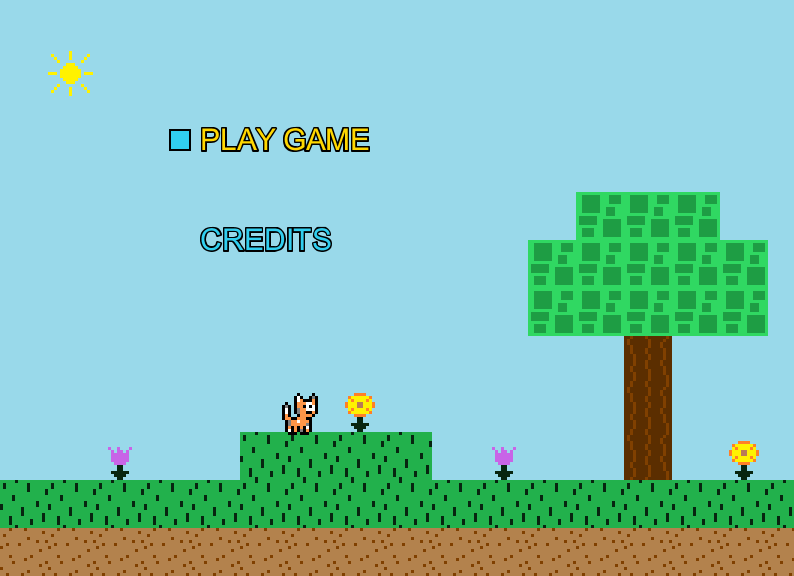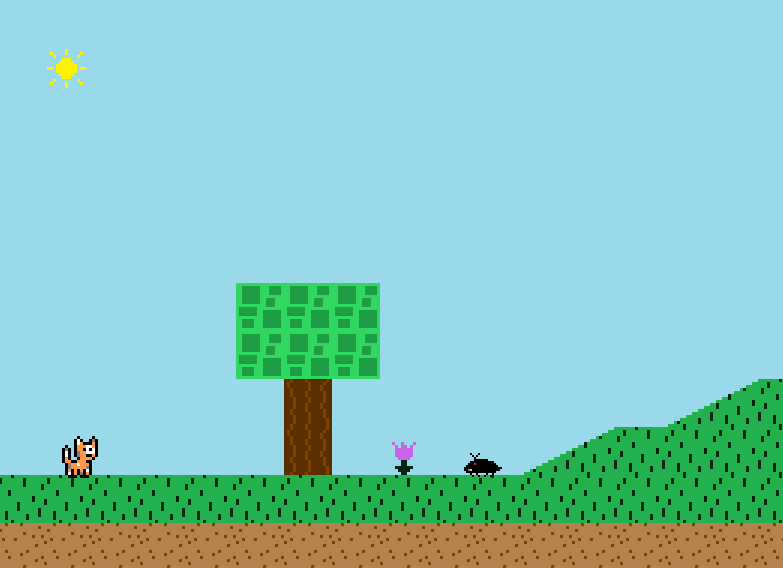Table of contents
Screen Coordinator
What is the Screen Coordinator?
The ScreenCoordinator class in the Game package is integral for bringing the entirety of the game’s code together. Its job is to dictate which section (screen) of the game to load at a given time. This class is attached to the engine’s game loop in the Game.java file, and from there it coordinates what happens and when it happens. Each screen contains code for updating game logic and drawing graphics for a piece of the game.
What Screens can the Screen Coordinator currently load?
Currently, there are three main screens that the ScreenCoordinator class can load: the menu screen, the credits screen, and the play level screen. The menu screen is always loaded at the start of the game (which you see when the game first starts up):

When the “Play Game” option on the menu screen is selected, the ScreenCoordinator class responds by loading the play level screen (which starts the actual game up):

And finally, when the “Credits” option on the menu screen is selected, the ScreenCoordinator class responds by predictably loading the credits screen:

The ScreenCoordinator can support as many screens as necessary – there is no limit!
Game State
The ScreenCoordinator class has an instance variable for keeping track of the current game state. This gameState variable can be of any type defined in the GameState enum, which can be found in the GameState.java file located in the Game package.
The current states defined in the GameState enum are MENU, LEVEL, CREDITS, which all coincide with a specific screen. Based on the value of the gameState instance variable, the ScreenCoordinator will choose to load its corresponding screen. How this is done can be seen in the below snippet of the ScreenCoordinator's update method:
switch(gameState) {
case MENU:
currentScreen = new MenuScreen(this);
break;
case LEVEL:
currentScreen = new PlayLevelScreen(this);
break;
case CREDITS:
currentScreen = new CreditsScreen(this);
break;
}
The ScreenCoordinator will only change screens when it detects that its gameState has been changed. The class exposes a method setGameState which any other class can use to change the current game state and force ScreenCoordinator to load a different screen. As you can see in the above code snippet, ScreenCoordinator is passing an instance of itself into each screen instance (e.g. MenuScreen). This allows those screen classes to set the game state of ScreenCoordinator when necessary. An example of where this is used is when the MenuScreen is loaded and the player selects the “Play Game” option – this causes the MenuScreen to set ScreenCoordinator's game state to LEVEL, which triggers it to load the PlayLevelScreen class.